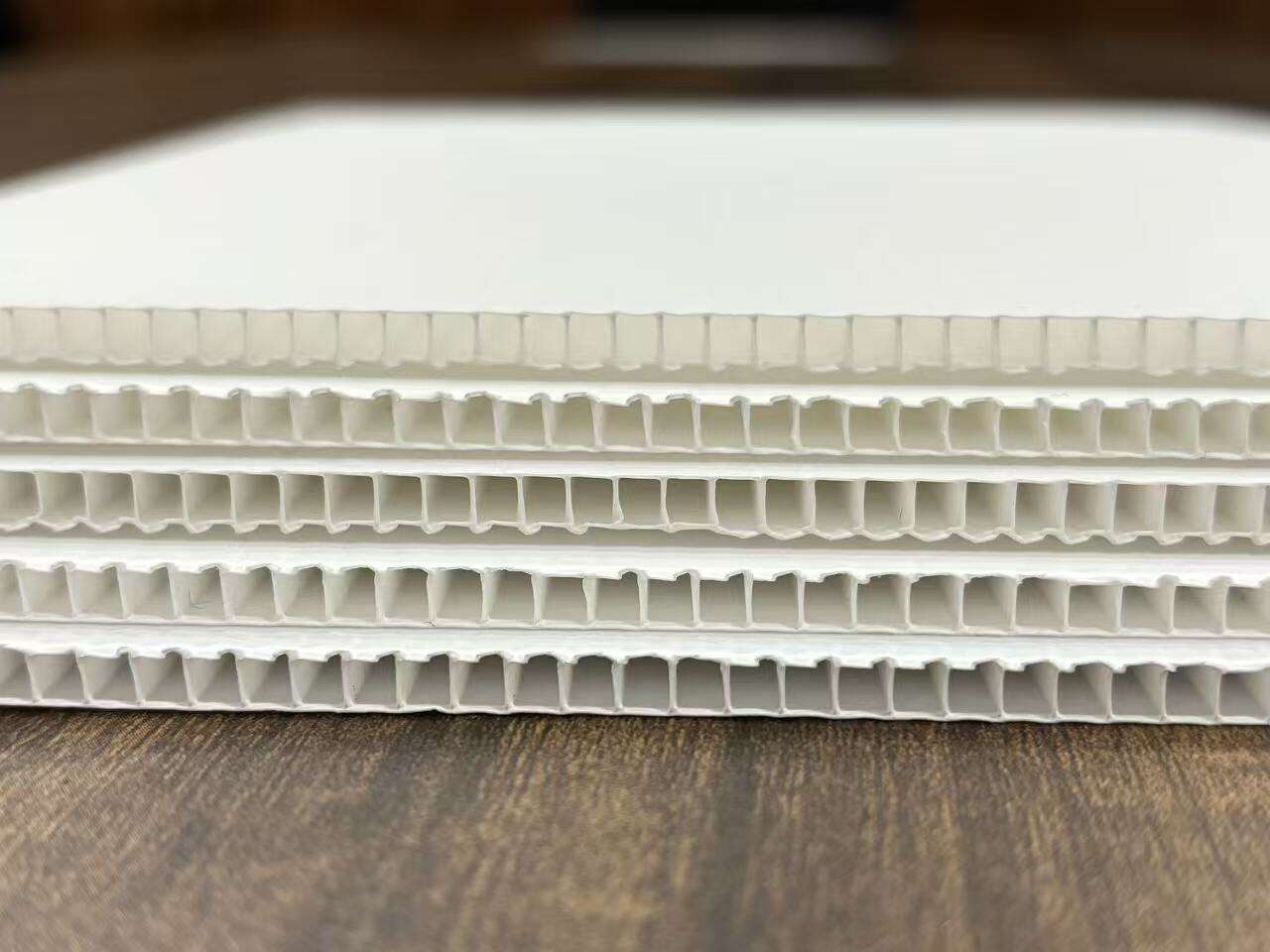Understanding the Advanced Production of Polypropylene Hollow Sheets
The manufacturing of pp hollow sheet represents a significant advancement in plastic engineering, combining durability with lightweight design. These versatile materials have revolutionized packaging, construction, and industrial applications through their unique structural properties and cost-effective production methods. As industries continue to seek sustainable and efficient materials, the demand for high-quality pp hollow sheet products continues to grow exponentially.
Modern manufacturing facilities are increasingly adopting sophisticated technologies to produce these sheets with enhanced precision and consistency. The process integrates multiple stages of refinement, from raw material selection to final quality control, ensuring optimal performance in diverse applications. Understanding these manufacturing intricacies is crucial for businesses looking to maintain competitive advantages in today's market.
Raw Material Selection and Preparation
Essential Material Components
The foundation of superior pp hollow sheet production begins with carefully selected raw materials. Virgin polypropylene pellets serve as the primary component, often combined with specific additives to enhance particular properties. These may include UV stabilizers for outdoor applications, flame retardants for construction uses, and color masterbatches for aesthetic requirements.
Material preparation involves precise mixing ratios and thorough homogenization to ensure consistent quality throughout the production run. Advanced mixing equipment maintains uniform distribution of additives, preventing inconsistencies that could compromise the final product's integrity.
Quality Control Standards
Implementing rigorous quality control measures during material preparation significantly impacts the final product's performance. Each batch undergoes extensive testing for moisture content, melt flow index, and contamination levels. These preliminary checks prevent production issues and ensure the pp hollow sheet meets industry specifications.
Modern manufacturing facilities maintain detailed documentation of raw material specifications, enabling traceability and consistent quality across production runs. This systematic approach to material management helps optimize resource utilization while maintaining high-quality standards.
Extrusion Process Technology
Advanced Extrusion Systems
The heart of pp hollow sheet manufacturing lies in the extrusion process, where specialized equipment transforms raw materials into the finished product. Multi-layer co-extrusion technology enables the production of sheets with varying characteristics across their thickness, optimizing both performance and material usage.
Temperature control plays a crucial role throughout the extrusion process. Advanced heating zones maintain precise temperatures, ensuring proper material flow and preventing degradation. The expertise of operators in managing these parameters directly influences the quality of the final product.
Die Design and Configuration
The extrusion die's design significantly impacts the pp hollow sheet's structural integrity and appearance. Modern dies incorporate flow channels specifically engineered to ensure uniform material distribution and consistent thickness across the sheet width. Regular maintenance and precise adjustment of die components maintain optimal performance.
Computer-controlled systems monitor and adjust die parameters in real-time, responding to variations in material flow and environmental conditions. This level of automation helps maintain consistent quality while maximizing production efficiency.
Surface Treatment and Enhancement
Corona Treatment Applications
Surface treatment technologies enhance the pp hollow sheet's printability and adhesion properties. Corona treatment, a widely adopted method, modifies the surface energy of the sheet, improving its compatibility with inks, coatings, and adhesives. This process requires precise control of treatment intensity and exposure time.
Regular monitoring of surface treatment effectiveness ensures consistent results across production runs. Quality control teams conduct wettability tests and surface energy measurements to verify treatment success and maintain product specifications.
Special Finish Options
Various finish options cater to specific application requirements. Matt finishes reduce glare and provide better grip, while glossy surfaces enhance aesthetic appeal. Specialized rollers and cooling systems control surface texture development during the manufacturing process.
Advanced surface enhancement techniques can incorporate anti-static properties or scratch-resistant coatings, expanding the pp hollow sheet's application range. These value-added features meet evolving market demands for enhanced functionality.
Quality Assurance and Testing
Physical Property Testing
Comprehensive testing protocols verify the pp hollow sheet's mechanical properties. Impact resistance, tensile strength, and flexural properties undergo regular evaluation using standardized testing equipment. Results documentation ensures compliance with industry standards and customer specifications.
Environmental testing simulates real-world conditions to assess product durability. Temperature cycling, UV exposure, and chemical resistance tests provide valuable data for product development and quality improvement initiatives.
Dimensional Control Systems
Advanced measurement systems monitor critical dimensions throughout production. Laser sensors and optical systems provide real-time feedback on thickness, width, and surface quality. This data enables immediate adjustments to maintain tight tolerances and reduce waste.
Statistical process control methods analyze dimensional data trends, identifying opportunities for process optimization. This systematic approach to quality control ensures consistent product performance and customer satisfaction.
Frequently Asked Questions
What makes pp hollow sheet different from solid sheets?
PP hollow sheets feature an internal cellular structure that provides excellent strength-to-weight ratio while using less material than solid sheets. This design offers superior insulation properties and cost-effectiveness while maintaining structural integrity.
How long does pp hollow sheet typically last?
With proper manufacturing and appropriate use, pp hollow sheets can last 5-10 years or more. Factors affecting longevity include UV exposure, chemical exposure, and mechanical stress. Products with UV stabilizers and proper maintenance can extend service life significantly.
What are the environmental benefits of pp hollow sheet manufacturing?
PP hollow sheet production offers several environmental advantages, including reduced material usage compared to solid sheets, recyclability, and energy-efficient manufacturing processes. Many manufacturers now incorporate recycled content and implement closed-loop recycling systems.

